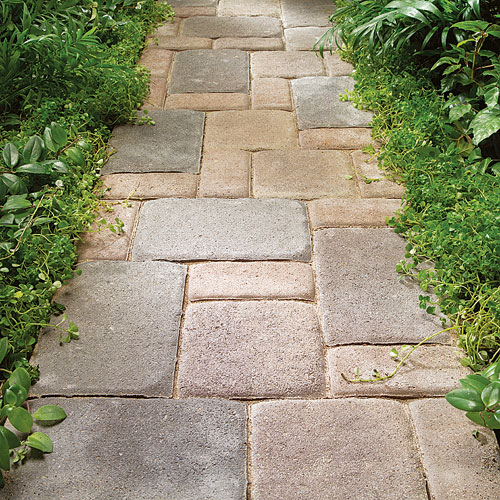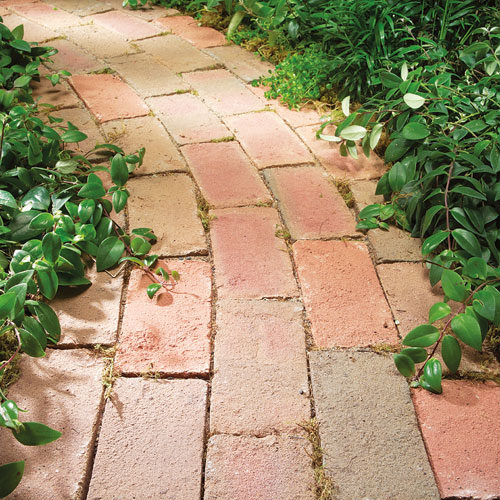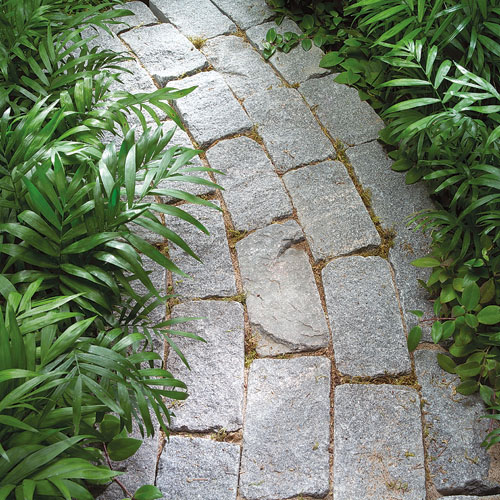
A durable and attractive pathway solution, pavers can withstand heavy loads. They are commonly made from concrete, clay or stone and can be laid in a variety of patterns.
Paving is time consuming and labour intensive, but it can be done by competent DIYers.
To lay pavers, dig the pathway to a depth of 200mm and fill the base with 100mm of gravel. Use a plate compactor to pack down the base. You can hire one for about $60 a day.
Lay the edging of your choice, spread a 20mm bed of sand, then level with a timber screed. Position the pavers on top in the desired pattern, using a wet brick saw to cut them.
Set the pavers with the plate compactor and sweep sand into the gaps to finish the path.
TIP Avoid paving too close to large trees.
Types of pavers
Concrete pavers
Concrete pavers come in a wide range of colours and shapes, and are the most common type of paver. They last for about 30 years and fade over time, so store leftover ones outside to weather them evenly.

Concrete pavers come in a wide range of colours and shapes, and are the most common type of paver
Clay pavers
Clay pavers are very durable and will last a lifetime, providing better colour retention than concrete pavers. While some house bricks may resemble clay pavers, they can’t be used for paving, as they are too soft and will deteriorate.

Clay pavers are very durable and will last a lifetime, providing better colour retention than concrete pavers
Stone pavers
Stone pavers cost more than twice the price of concrete or clay, but they’re eye-catching and long lasting, although difficult to cut to size. Each paver is unique and they often have rough or irregular faces.

Stone pavers cost more than twice the price of concrete or clay but they’re eye-catching and long lasting

